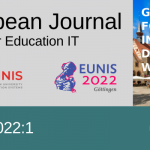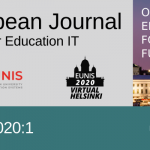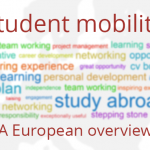Last year euroCris and EUNIS collaborated through ERAI on a survey about the state of CRIS/IR in Europe. Following this report we’ve wanted to listen to thought leaders on the matter from all around the world about the results. First out is Danica Zendulkova. She is the Head of R&D Portal Department at the Slovak Centre of Scientific and Technical Information. She’s been working with CRIS systems for over 10 years. The organisation provide several systems supporting science on national level: SK CRIS, Central Repository of Theses and Dissertations, Central Registry of Publication Activity (of Slovak Universities).
The recently released euroCRIS/EUNIS survey on the CRIS/IR landscape shows a sharp increase in the number of available institutional CRIS systems in Europe. Do you share the perception that institutions are gradually realizing the value of such systems? What do you think it’s the main driver for such increase in their implementation
In Slovakia, the mentioned trend has not been very significant yet. Probably publicity of institutional activities and scientific impact could be the main driver.
One of the key areas for CRIS systems to deliver their value is a fair amount of harmonisation across platforms and their use across institutions. Would you say this is already taking place in your geographical environment? Could you please mention an example for it?
In Slovakia two ways of interoperability have been developed:
- interoperability between SK CRIS and Central Registry of Publication activity concerning research results metadata share
- integration of R&D project data collected by grant agencies to the R&D Projects module of SK CRIS
There are areas where CRISs are expected to play a very relevant role at institutions such as Research Data Management once the appropriate harmonized standards arise – would you say there’s been significant progress recently in the area?
No, not yet
Repositories are increasingly consolidated as part of the research information management infrastructure at institutional level. Do you see value in the current trend moving to one solution for all needs or should a specialized approach be sustained?
One SW solution for CRIS and repository brings cost saving in area of ICT development and administration. In the same time one solution helps to avoid duplicate data entries. But this solution must be very attentive and helpful to specialized tasks and workflows.
After promoting Open Access to scientific publications, research funders have moved onto encouraging Open Access to scientific data. Do you think the trend will be towards the emergence of institutional repositories exclusively devoted to research data management? Are you aware of any ongoing initiatives for the development of such type of research data catalogues?
We are on the scratch-line in the area of Open Access including OA to scientific data.
However, the road map for Scientific Open Access Repository has already born. I hope first outcomes will be available no later than two years.
euroCRIS has been involved in the developemnt of the OpenAIRE Guidelines for CRIS Managers. This is a promising workline for advancing CRIS/repository interoperability and to bring closer two communities that have often stood apart in the past. Do you see that this kind of interoperability as valuable and if so, are you planning to adopt such an approach?
Yes, we consider this interoperability as very useful and we planned to adopt it in the near future.
There are lots of discussions lately on how to measure research impact and how to harmonize the concept across disciplines and institutions. Do you think CRIS systems could help addressing this area in a coherent way? What steps are currently being taken within your Institution to make this feasible?
Yes, CRIS system could be used as a tool for measure research impact.
The steps could be following:
- set the measure rules
- prepare the quantifiable indicators from rules
- analyse of SW solution
- implementation of new module to CRIS

Danica Zendulková











